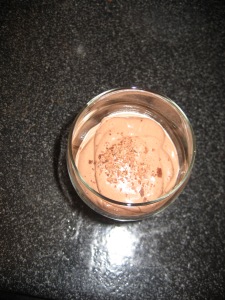Meatloaf has long been hailed a staple of American cuisine that helps to stretch a buck and feed your family for pennies on the dollar as opposed to giving them actual meat. Why should this blue collar classic technique of adding mostly bread crumbs, cracker, or cereal to a pound of greasy low grade beef in order to stuff their kin on a budget be limited to the omnivores? Hey, it’s not.
As you know, not every vegan is a Hollywood actor or rich so-and-so. Some of us live on a real world budget and Vegetarianism/Veganism can not only be accessible to anyone, it can, in fact, be a cheap way to maintain a healthy diet! Just think about how much a pound of no frills carrots costs compared to a pound of beef or turkey. And is the carrot cut with hunks of would be discarded gristle and lard? Is it swimming with calories and colon-clogging inferior proteins? I hear people say all the time that they’re not wealthy enough to go on a diet, and they’re right. Unsatisfying diet shakes and bars that taste like chocolate-flavored cow pies can be really expensive.
Dairy and Meat can actually be the most expensive things on the average grocery list as well as the most detrimental to your health and waistline. Substitutes for natural dairy and meat, while generally much healthier, can be very costly, but check out the dry goods in your grocery store. You’ll find substantial proteins like Gluten, TVP (Textured Vegetable Protein) and not to mention LEGUMES that are way better and more cost efficient than anything that bleeds or slapped with a flashy brand name. Here is a great way to stretch a buck and fill your belly on TVP:
2 cloves fresh Garlic
4 oz Onion
4 oz Carrot
4 oz Celery
3 T Soy Sauce
1-2 Roma Tomatoes
½ t Mustard Powder
½ t Paprika
¼ t Black Pepper
¼ – ½ t Sea Salt
4 T Nutritional Yeast
2 T ground Flax mixed with 3-4 T Water
1 c TVP (Textured Vegetable Protein)
¾ c Vegetable Stock
1 cup Bread Crumbs or 1 Sleeve of Saltines finely ground
1 T Earth Balance (or butter substitute of your choice)
Optional: Ketchup
For this recipe, I chopped all the vegetables in a food processor. You are welcome to chop these by hand and you will see larger chunks of vegetable matter in your loaf if that is what you like. Just be sure to chop them finely because you need them to cook quickly and not get ahead of the TVP.
Here is my food processor shortcut:
First, finely grind the garlic in the processor,
Add Carrots, pulse for 5 seconds
Add Onions, pulse for 2 seconds,
Add Celery, pulse for 5 seconds.
You should have semi-fine bits of vegetables but still be able to distinguish the different types. You can mash them into a fine pulp if you want, but I like to see the bits of carrot and what-not in my loaf.
Start warming the oven up to 350F
Warm the Vegetable Stock, combine it with the TVP and allow it to sit while you sauté the vegetables in Earth Balance (or butter substitute) with the Salt, Pepper, Paprika, and Mustard. The cooking should be quick and the purpose is to bring the flavor out of the vegetables so the TVP will soak it up and not have separate bland bits floating around in the loaf like insipid barflies waiting for someone to chew them up and spit them out. Heat the pan, melt your Earth Balance, add veggies and cook for no more than 3 minutes on Medium heat. Meanwhile, add your tomatoes to the blender/food processor and practically liquefy them. Add them to the veggies in the pan.
By now, your TVP should have soaked up most of the water, so add it as well as the Flax, Soy Sauce, and Nutritional Yeast to the pan as well. At this point, the contents of the pan should be cool enough that you can stick your hand in there and blend everything by hand. If it’s not, first get your hand out of there, genius, and then either use a spoon to stir or let it cool down.
Mix in the Breadcrumbs or Crackers until you have a mixture that retains its shape. Add them slowly and realize that you may need more or less, depending upon how juicy your veggies (namely, your tomatoes) were and how well the TVP soaked up the stock.
Line an oven safe container with foil and add a small drizzle of cooking oil or Earth Balance to keep the loaf from sticking to the bottom. Place the loaf mix into the pan and shape it, then if you must, add ketchup to the top of your loaf.
Cook this for about 10 minutes or until you’ve achieved the desired dryness. There should be no need to cook out any bacteria as you would with meat or eggs, in fact, you can eat this completely raw if you want. Savage.
To keep that down home feel, serve your loaf with mashed potatoes (made with vegetable stock instead of milk) and Earth Balance. You can also add some greens like asparagus, Brussels sprouts or green beans.
If you choose, you can modify this recipe by adding walnuts, piñones (pine nuts) or spinach to the veggies before sautéing or substituting the garlic for a heaping spoonful of pesto. Go crazy.


